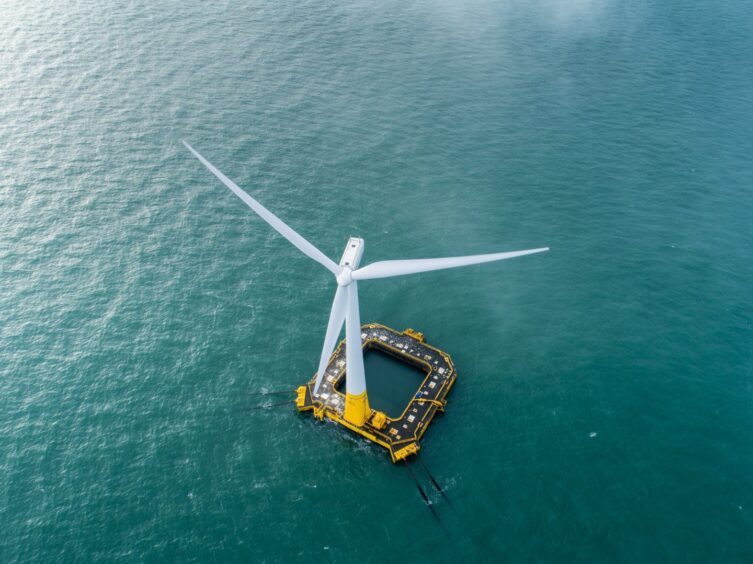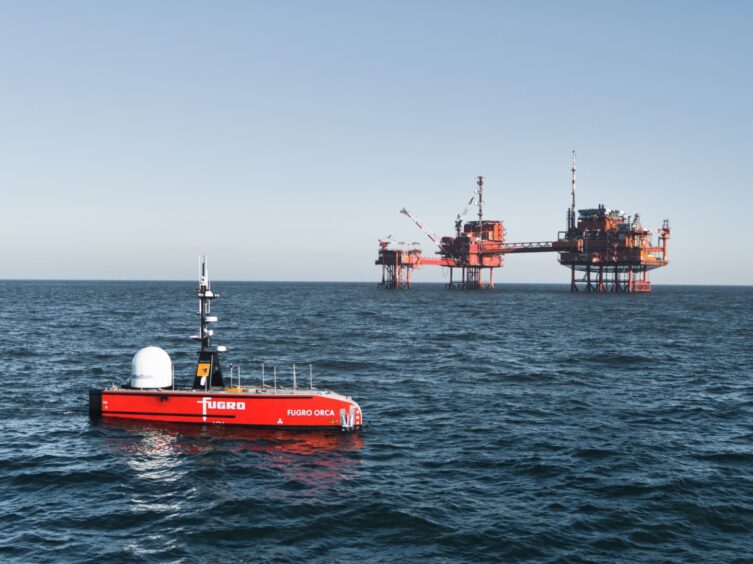
‘Navigating the Blue Frontier’ will be the theme for Subsea Expo 2024 in Aberdeen, conjuring up images of space exploration and pioneering endeavours.
Global Underwater Hub chief executive Neil Gordon told Energy Voice it was a fitting theme and a deliberate choice, reflecting the momentous change and innovation which is set to shape the subsea sector in the decades ahead.
“What we’ll be looking at is pushing the frontier, pushing the boundaries of what we’re doing in the blue economy in the underwater space,” Mr Gordon said.
“The underwater is an environment, it’s not a sector. It’s like space.”
The spacelike theme continues with one of the headline speakers at the Expo working on a futuristic project to “make humans aquatic”.
Sean Wolpert from subsea research firm DEEP is aiming to create seabed laboratories to push the boundaries of what humans can do in the marine environment.
Mr Gordon likened the technical challenges of the project to “putting people on Mars”.
Another Expo speaker pushing the boundaries of what’s possible underwater is Ian Douglas from XLCC, one of the companies working on a pioneering project to connect renewables projects in Morocco to the UK via a subsea cable.
Also headlining the event will be SMI Group CEO Jenny Shaw and CCU International CEO Beena Sharma.
‘Unprecedented’ year for subsea sector
Mr Gordon said the theme of ‘Navigating the Blue Frontier’ is also fitting after the subsea industry found itself contending with unprecedented events in 2023.
“It was quite a challenging year for the industry,” Mr Gordon told Energy Voice.
“When you think about the Nord Stream event… it really gave us a wakeup call about the fragility of subsea infrastructure around our coastal waters, not only here but around the world.”
With the war in Ukraine and numerous changes in UK energy policy, Mr Gordon said it made figuring out what it all means for the subsea supply chain “quite a difficult crystal ball to look into”.
“We want to make sure that we retain that supply chain in the UK,” he said.
“We’ve got lots of skilled people and we’ve got lots of companies that are based here, and the challenge when you go into a transitional period of energy transition, is it takes time.”
“To sustain that capacity and capability, we need to make sure we have an industrial strategy that supports that.”
Mr Gordon pointed to past UK industries such as mining, shipbuilding, steel and car manufacturing which have experienced transition or decline imposed through government strategy, and said lessons needed to be learned to avoid that in the oil and gas sector.
“There’s an element of, we still need oil and gas projects coming through to sustain that supply chain until the level of opportunity and the cleaner, greener projects come through. Because they will.”
Rather than accepting the oil and gas decline and simply waiting for emerging renewables sectors to come to the fore, Mr Gordon said there needed to be an acceleration of newer projects to avoid a “dip” and a loss in confidence which could see companies and skilled people lost overseas.
But alongside the challenges, there were also many highlights for the subsea sector in 2023.
A royal visit to the GUH headquarters in Aberdeen from King Charles capped off a year in which the organisation opened two new offices in Newcastle and Bristol, underlining the growth of the subsea sector across the UK.
Floating offshore wind opportunity
Mr Gordon said the fifth allocation round (AR5) in the government’s contracts for difference (CfD) scheme, which attracted no bids for offshore wind, was another wakeup call for the subsea sector.
While the government had aimed to drive down prices in AR5, Mr Gordon said a more strategic approach was needed to focus on capturing the long-term industrial value of emerging renewables sectors.
“Because we didn’t capture the industrial value of the fixed wind, a lot of that capability is coming from Europe,” he said.
“But where we have a real, world class capability is in the underwater sector.
“When we look at the future, where we really see the biggest growth is in floating offshore wind for the subsea sector.”
The many similarities in the technology used for anchoring and mooring floating offshore platforms between the oil and gas and wind sectors presented a unique opportunity for the UK subsea sector, Mr Gordon said.
“We see those [floating] areas for the subsea sector as being real game changers for us to lead on to bring the industry together,” he said.
“It might not all be manufactured here, but we certainly want to be seen as, similarly to what we’ve done in oil and gas, the world leader in setting the standards and guidelines for this.”
‘Everyone wants a piece of the action’
Mr Gordon said the UK had the opportunity to prove emerging subsea technologies in the North Sea before exporting globally to regions of the world with deeper waters.
“We are fortunate to have relatively shallow waters around the UK, so we can prove a lot of these [technologies], which we did in the oil and gas in the early days of subsea,” he said.
“But it was the very same technology that was perfected to go into the deeper waters and that’s what we really see as the big opportunity for floating offshore wind in the subsea sector.”
With thousands of component parts needed for just the 5GW of floating offshore wind included in the INTOG projects, Mr Gordon said many don’t realise the size of the opportunity.
“Even the government don’t realise the scale of what is required,” he said.
“So I think there’ll be a lot more [opportunities], but if we think about both Scotland, the UK and the regions around… everyone wants a piece of the action but we all can’t be competing for the same thing.”
With a “tsunami” of work ahead for the sector from floating offshore wind, Mr Gordon said, “just to realise a percentage of that is massive”.
“We can’t capture it all, we can’t kid ourselves that we can build all these things here,” he said.
“But the challenge for the industry at the moment, even for the big project developers, is the confidence in investing in that and making sure there’s enough money.”
Subsea sector remains ‘buoyant’
Despite the challenges in 2023, Mr Gordon said the subsea sector is now “a lot more buoyant, pardon the pun”.
But the confidence has returned more quickly elsewhere.
“Norway, for example, the US have certainly come back a lot quicker than the UK projects,” he said.
While much attention is currently focused on floating offshore wind, Mr Gordon said emerging sectors like decommissioning, carbon capture, utilisation and storage (CCUS), hydrogen, wave and tidal also present huge opportunities for UK subsea players.
In addition, investments in Artificial Intelligence, autonomous underwater vehicles, subsea minerals and the defence sector will also bring significant change, he said.
With so much on the horizon, Mr Gordon said project developers often forget that the subsea companies they’re likely to rely on will also be needed for projects in other sectors, and a “more holistic view” is needed to avoid putting pressure on the supply chain.
“Let’s look at trying to balance some of those and see if we could be slightly smarter so we’re not feast or famine, it’s a bit more balanced and then everybody’s kept a lot more, busy and satisfied rather than fighting for resources and people,” he said.
As in space, while the opportunities are seemingly endless so too are the challenges as the subsea sector continues to push the boundaries within Earth’s final, ‘blue’ frontier.

 © Supplied by DEEP
© Supplied by DEEP © Supplied by GUH
© Supplied by GUH © Supplied by BW Ideol
© Supplied by BW Ideol © Supplied by TAQA
© Supplied by TAQA